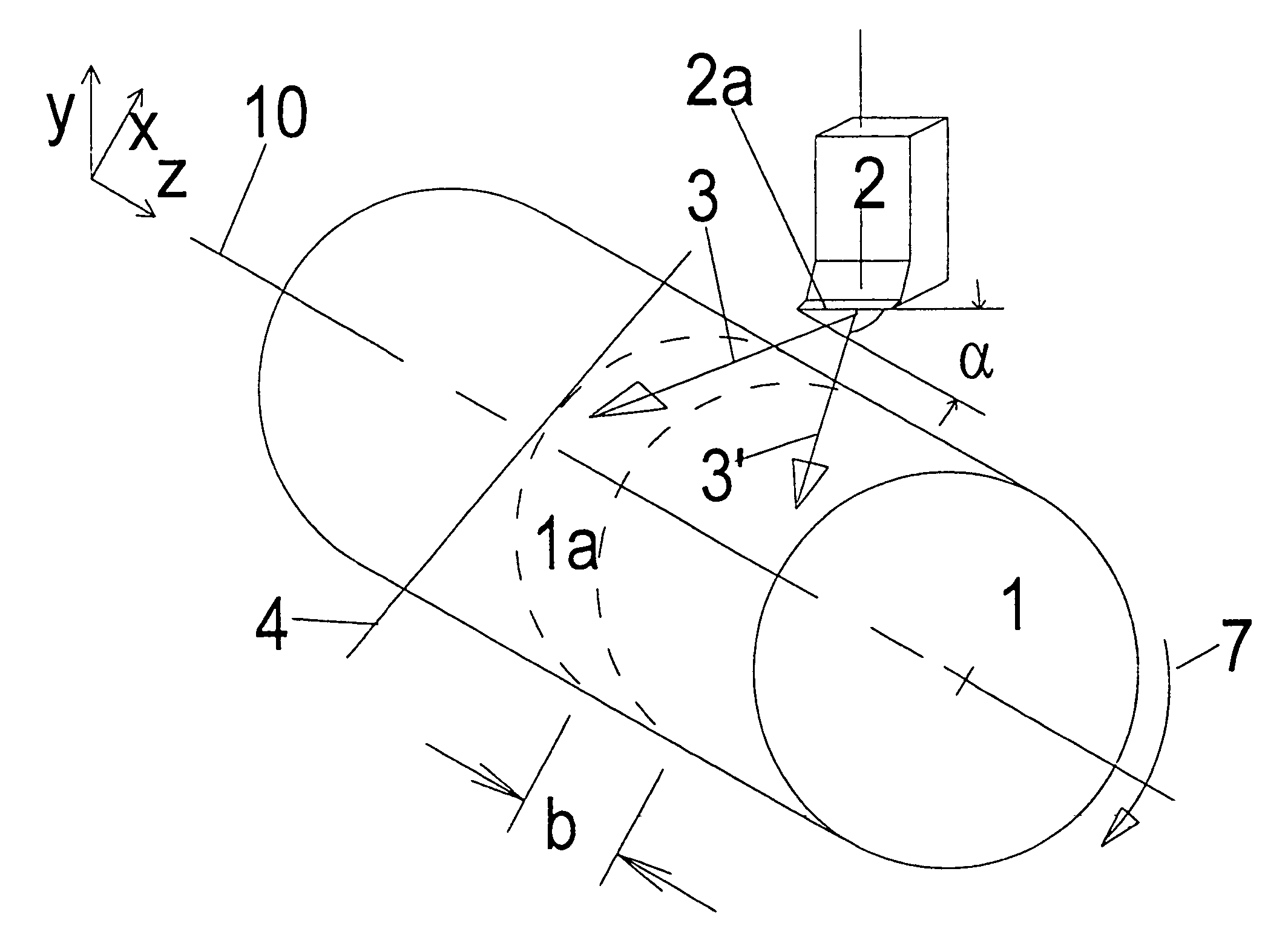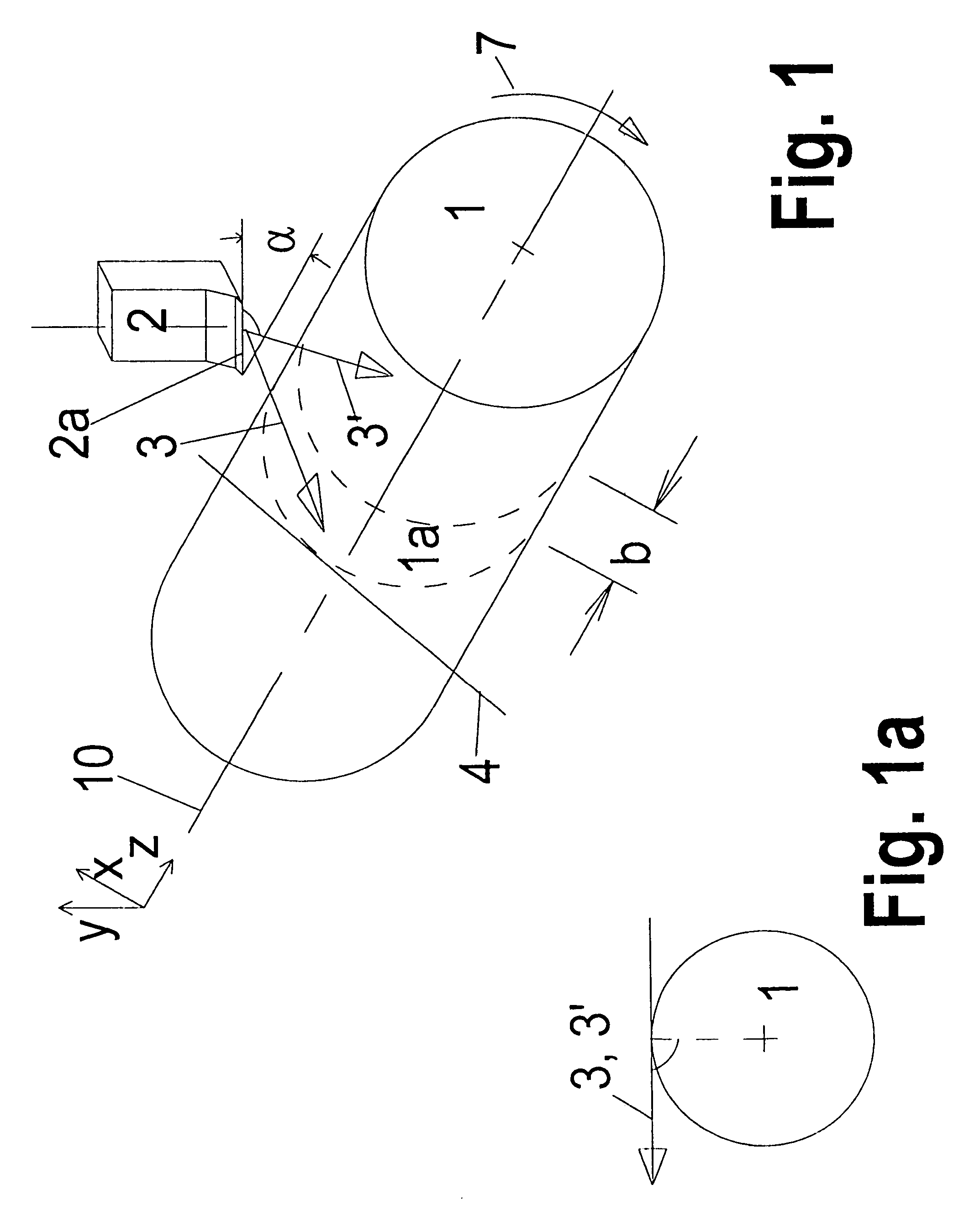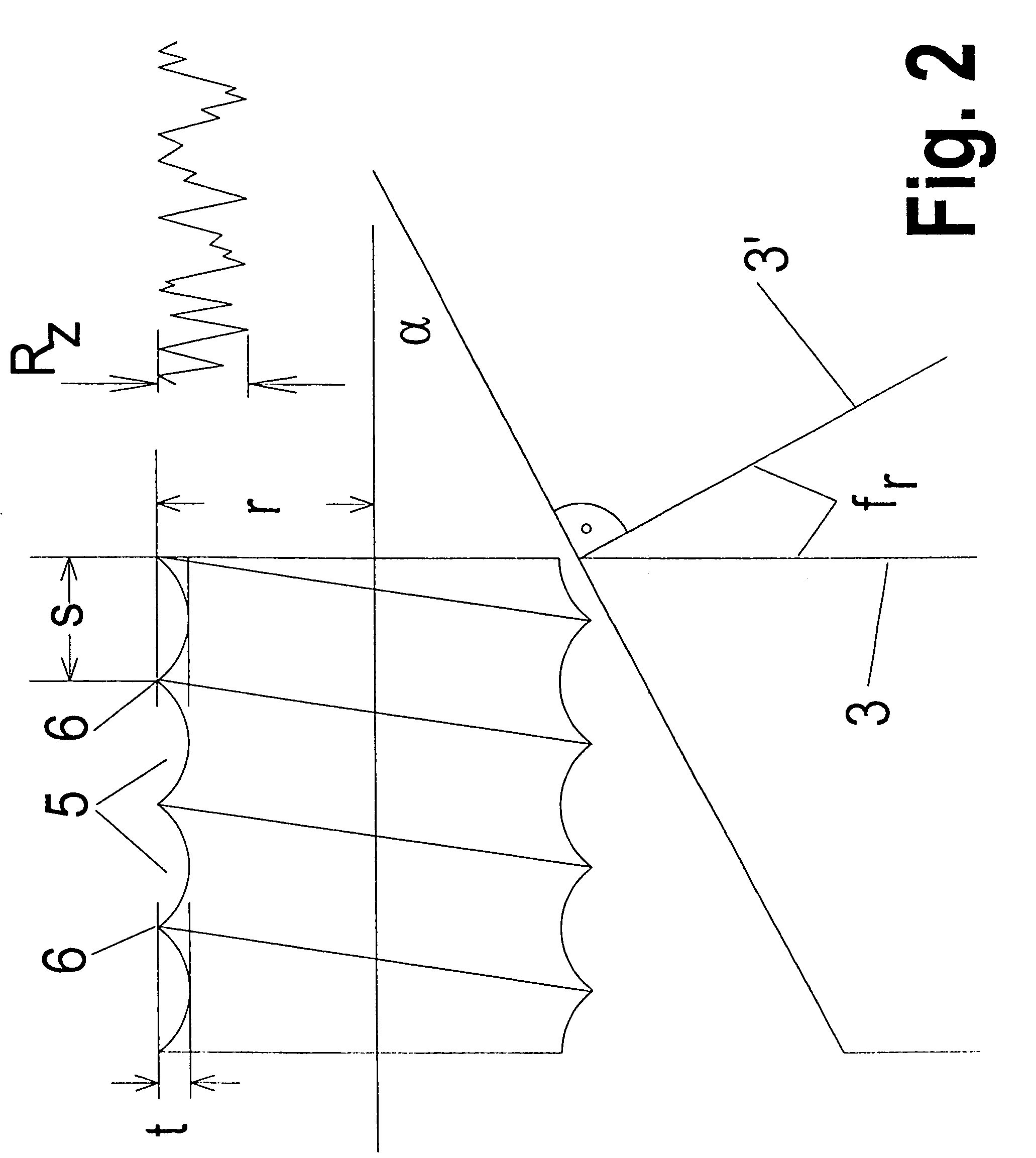Process for twist-free steel cutting of rotational symmetrical surfaces
a technology of rotating symmetrical surfaces and cutting processes, which is applied in the direction of boring/drilling equipment, turning equipment, broaching machines, etc., can solve the problems of low cutting output capacity, and relative slow machining progress, and achieve good surface quality
- Summary
- Abstract
- Description
- Claims
- Application Information
AI Technical Summary
Benefits of technology
Problems solved by technology
Method used
Image
Examples
Embodiment Construction
[0054]Firstly, in FIG. 3 there is represented how for example on longitudinal turning, by having the cutter shifted in the direction of the rotation axis and by its vertex radius rE, there results a thread shaped surface:
[0055]On a constant lead f, expressed in mm / workpiece rotation, there appears a helically shaped groove 5 whose pitch in the direction of the rotation axis 10 is constant at a constant lead f. The depth t′ of this groove clearly depends here on the size of the vertex radius rE of the resulting cut: the greater this vertex radius rE is, the more flattened the groove flanks are, and thereby the smaller the depth t′ will be. The dependency in accordance with the formula shows:
[0056]t=f28·rE
[0057]Only by having as a rule at least one of the cutter ridges, in particular that of the secondary cutting edge which is producing the cutting corner, positioned in an angle as small as possible, preferably in parallel to the direction of the rotation axis 10, there is usually pos...
PUM
| Property | Measurement | Unit |
|---|---|---|
| rotation | aaaaa | aaaaa |
| rotation | aaaaa | aaaaa |
| rotation | aaaaa | aaaaa |
Abstract
Description
Claims
Application Information
 Login to View More
Login to View More - R&D
- Intellectual Property
- Life Sciences
- Materials
- Tech Scout
- Unparalleled Data Quality
- Higher Quality Content
- 60% Fewer Hallucinations
Browse by: Latest US Patents, China's latest patents, Technical Efficacy Thesaurus, Application Domain, Technology Topic, Popular Technical Reports.
© 2025 PatSnap. All rights reserved.Legal|Privacy policy|Modern Slavery Act Transparency Statement|Sitemap|About US| Contact US: help@patsnap.com



